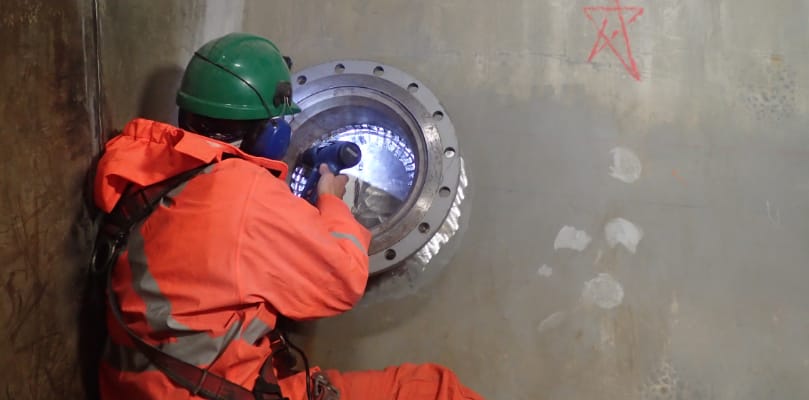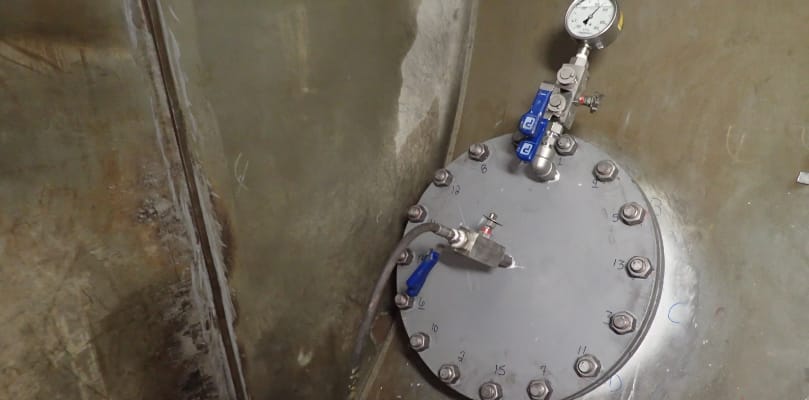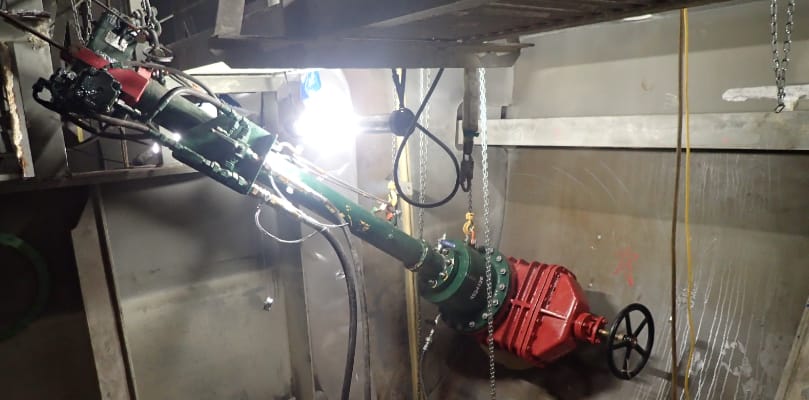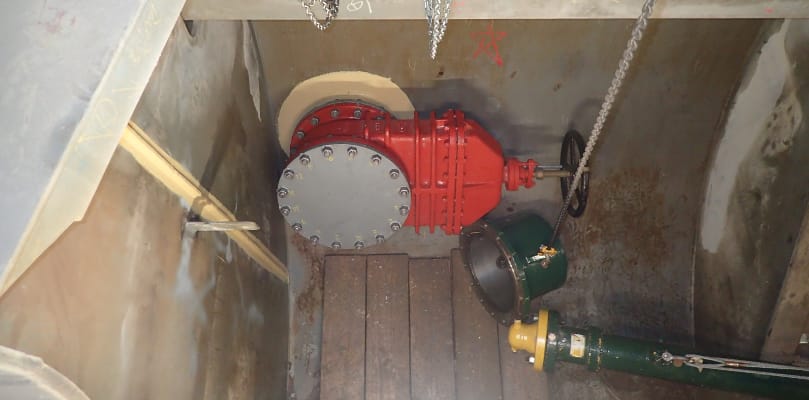East Coast Canada
Innovative Hot Tapping Hull Repair
On-station repairs to FPSO bilge keel and bilge plating while in production in harsh winter conditions.
The Challenge
The Operator of an FPSO operating on the East Coast of Canada identified numerous cracks to the bilge keel and adjacent bilge plating, with one of these cracks resulting in an uncontrolled ingress of seawater into a ballast tank.
The location and orientation of these cracks posed a significant and immediate threat to the structural integrity of the asset.
Due to the winter season and harsh environment, a diver-deployed cofferdam to facilitate a conventional crop and renew type repair was not an option.

The Solution
- 14no. weld Procedure Qualification Records (PQR’s) required
- 16 daysto execute the initial workscope
- 0 accidents or incidents during scope execution
- 3 defects repairs in three different ballast tanks
- 1 bespoke water-backed welding test tank utilised for all weld qualification testing
Third-party analysis was conducted to identify methods to reduce the risk of crack propagation. The analysis confirmed that a change to the vessel loading would introduce compression at the crack location, limiting the likelihood of crack propagation.
After careful consideration, we proposed the application of hot-tapping technology to cut the affected areas to the bilge plating and bilge keel, limiting the opportunity for the cracks to propagate further. This technology had never previously been applied for this purpose.
In order to install the necessary pipe-stub to perform the hot tapping operation, the qualification of a specialist water-backed welding procedure was necessary.

The Outcome
Working alongside a hot-tapping specialist, we modified the hot-tapping equipment to suit the intended repair scope, undertook onshore hot-tapping trials, and identified competent personnel in Canada to support the specialist hot-tapping operation.

We received Class endorsement to use our water-backed welding procedure to install the pipe-stubs to the bilge plating. Our on-site team of personnel provided guidance and supervision to the local welding personnel during pipe-stub installation and testing.
We prepared all required construction and safety documentation for this workscope, ensuring that suitable documentation was readily available for permit preparation in good time.
Our bespoke Safe System of Work was mobilised to provide best-in-class confined space ventilation and power distribution, along with mobilising all specialist hot-tapping equipment, materials and weld consumables from our warehouse facility in Kintore, Aberdeenshire.
We successfully implemented this repair methodology at three locations to the hull, whilst the FPSO remained on-station and in-production. All repairs were implemented safely and efficiently by our specialist team of offshore personnel.
